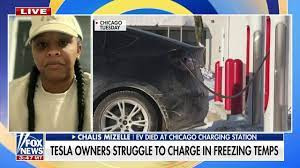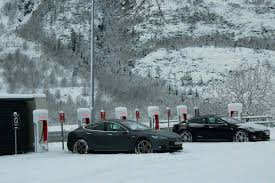
When people think back to the Winter of 2024, they are likely to remember the story of the stranded electric vehicles (EV) and pictures of frozen Tesla charging stations in Chicago. It’s a forever story even when the weather warms because the images will be searchable on YouTube. Stories about the ravages of winter are predictable- just like dropping temperatures.
It’s not the first time. In 2022, snow and ice blanketed the Mid-Atlantic and brought highway traffic to cease outside Washington, D.C. Searching YouTube today, you can learn that a “Tesla Driver Survived 14 hour Traffic Jam in Snowy Weather…” The EV chatter was similar. A Washington Post columnist (Charles Lane) opined that if more people drove electric vehicles they would litter the highway for miles.
Emergency Power:
Stories from either winter storm fail to mention instances where the lights went out but the batteries hummed on. A small inverter makes the electric vehicle turn into an emergency power source. It works like a backup generator when household power fails. And, handily, it can charge up a smartphone for emergency communications.
I’ve been writing about the diffusion of EV innovation for my entire career. I can safely predict that there will be more stories about them stalling in the cold weather or equally alarming narratives about the heat and fires. In many climates there is counter factual news about the technology.
But first, what really happened in Chicago, where Tesla vehicles were stacked up like “dead robots” at recharging stations? The initial media stories criticized the reliability of the network. But later on, more detailed reporting revealed that particular Tesla drivers were using the car for rideshare purposes (Uber and Lyft provide incentives for drivers to lease EVs). Allegedly these gig drivers did not have time to read the owner’s manual. It is recommended that drivers in colder climate condition the batteries as temperatures drop. That’s a standard procedure in Norway and Winnipeg. If the drivers in Chicago were using the car for commercial purposes they didn’t get a chance to hear about this. And, if they were driving rideshare then they were more likely to discharge the battery below 20 percent, a refill that would take longer even under the best of circumstances.
There is a sliver of good news. Those frozen drivers in Chicago might not have been able to reach a charging station but we now know from the media event in 2022 that, with a minimum of power, they could have stayed safe and warm inside their vehicles. Batteries in the Tesla can idle and produce interior heat (around 65 degrees) for 2 or 3 days.
Half Full or Half Empty:
Drivers in California, like myself, keep a “half -tank- of- range” just in case there’s an earthquake or fire. That’s useful when you have to evacuate quickly and you can’t be looking for fuel or energy. Moreover, when the electricity goes down, some gas stations can no longer pump fuel from their tanks. No matter where you live, it’s a useful practice for an “emergency prep kit”.
In classic chicanery TopGear, the BBC’s most watched TV show, Jeremy Clarkson appeared to show a Tesla Roadster running out of a battery. It later emerged that neither the Roadster nor a backup car Tesla supplied had less than 20 percent of its battery power remaining. The Top Gear producers had staged the event. The online links to this 2008 story have been removed but stories like this, and the Chicago freeze, ignite “range anxiety” and continue to get a spotlight.
As the weather improves, the glaring spotlight will reveal new stories about EV errors, particularly as the stakes get higher and the 2035 legislative mandates get closer. A recent survey after the Chicago freeze asked respondents (n=2000) about their future vehicle purchase. Half said that they were considering an electric car or a hybrid for their next purchase. So, unless they are driving as a gig and also heading into snowstorm, there’s a good chance that the freezing pictures will not be relevant. Instead, they will be charging these vehicles overnight in their garage, a carport, or at a Level 2 Charging Station in the apartment complex. Problem not solved, but thawing out.

